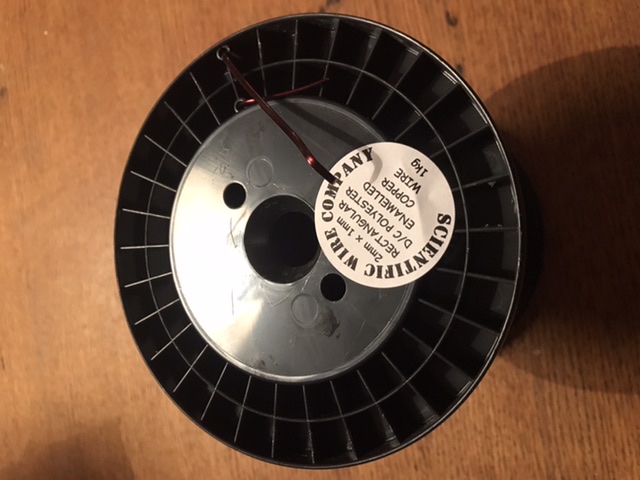Thanks, i haven’t seen those before ![]()
Otherwise this small bit looks nice:
EDIT: price is 350 EUR… forget it
Thanks, i haven’t seen those before ![]()
Otherwise this small bit looks nice:
EDIT: price is 350 EUR… forget it
Got the wire today! Now i just need to find some winding time 

Is it class H ? How much ºC can it handle ?
It’s class H, 200deg C
The varnish on the 2.5x1.25 wire i’ve tried before is incredibly tough so this is high quality wire.
Super excited to see the results.
Please do some static tests comparing it to 65 flipsky motor(I do not have one so I can’t compare myself).
If It’s not superior to Flipsky then a general redesign is in order(otherwise it kinda defeats the purpose of making it)
You have an idea how you’ll wind it ?
Maybe you can try following :
1 strand in hand (of your rectangular wire of 2mm²)
7 turns
Star connection
Will give around 47% fill factor which should be doable and 6707 RPM unloaded at 55V (122 kV).
Just my calculations.
Aiming for 8T delta at 150kV and 50%
I think you have an error, 7T star results in kV 99 (109x11/7/1.73)
Even 6T star at 116kV 38% is an OK winding
5T star at 31% is no improvement, just fixed winding issue.
We’ll see what’s doable for me. This is the first inrunner i do and i probably won’t press out the stator if not absolutely needed
You are right. I totally forgot to set the right material for the rotor 

Let me come back in a couple of minutes with something updated.
Ok so here it is 
I’m working with a model I designed that I think very close to the reality :
(This is 45° of the rotor / stator assembly).
So, based on this model here is what I have :
Current situation :
Gives me following data :
These data are in line with what’s been advertised by @Konstantin_Cunichin (minus copper area / wire fill factor). I’ll therefore consider my motor model valid for following optimizations.
Optimized model considering @Larsb 2mm² rectangular wire :
Larsb’s proposal (8T delta) :
Gives me following data :
Sliman’s proposal :
Gives me following data :
=> around 20% more troque at up to 70% of rotor speed compared to Lars’b proposal
Your turn to choose. In the end it’s a compromise between torque and speed 
No, it’s not since i will have a battery and controller that i think can saturate the laminations at both kVs. But i agree on the RPM vs lamination thickness. It doesn’t make sense to run this motor at 7500RPM
Also your motor model is theory while i have measured real kV of this motor so my figure is correct. It’s 109kV.
Not sure about this. Konstantin measured the Kv with Vesc tool prior to sending and said they all where 98kV if memory serves. See here :
Yes, might be the case but i trust my generator kV measurement more than VESC controller kV since the kV is a motor parameter, when measured in generator mode you get no effect from ESC.
Your choice, just wanted to help 
Yes, sorry, i appreciate it actually. You only get so far alone so a discussion is always valuable 
When I saw Franks(@JetboardCologne) post that motor production costs could be near ~50EUR I thinking about it few months already. I even found guys who working with ebikes who familiar with such devices, but no one interested to make it one copy at least without “a bottle of vodka” how we saying ![]()
@Larsb ans @Konstantin_Cunichin thanks for your pains
not even started yet. I’ve considered bringing it when we go to my mother in law for christmas, then i can do some winding therapy when needed 
Any news on the rewinding?
Any Updates on rewinding?
How is the motor in general, whant to get one of this,